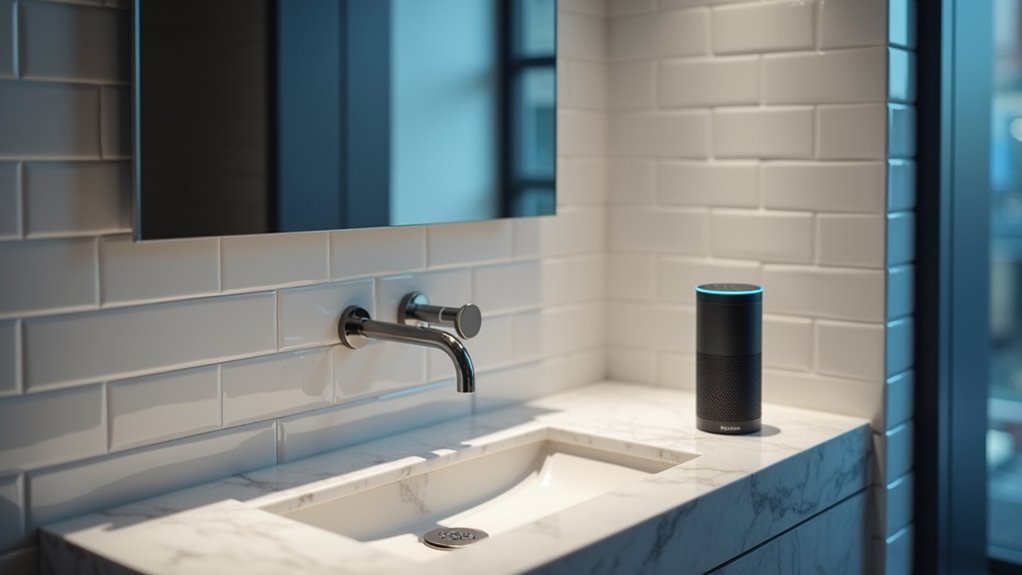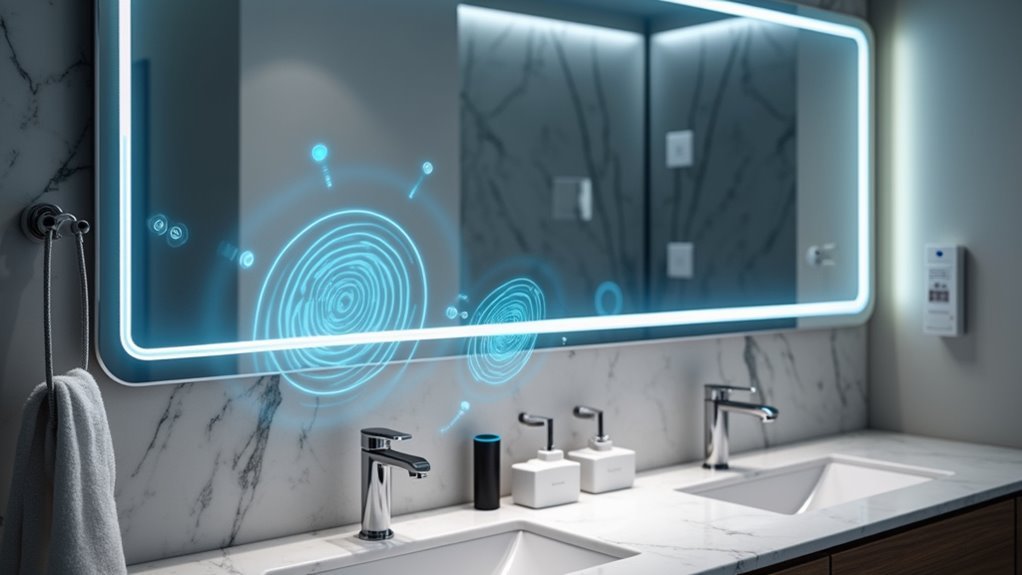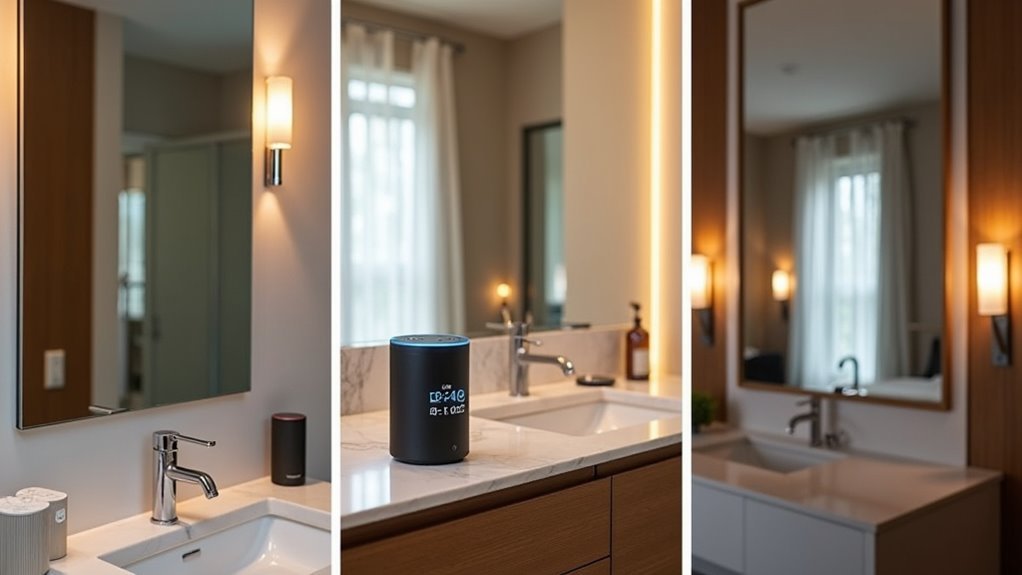You’ve probably walked past a smart mirror in a hotel lobby or tech store and wondered how you could bring that futuristic experience home. The reality is, integrating Alexa with a mirror setup isn’t as complicated as you might think, but there are three essential steps that’ll determine whether your project becomes a sleek addition to your morning routine or an expensive mistake gathering dust in your closet.
Setting Up Voice Command Recognition and Audio Components

While building your mirror-Alexa integration, you’ll need to prioritize audio component setup since voice recognition accuracy determines your project’s overall success.
Position your microphone within clear line of sight to capture commands effectively, as ambient noise considerably interferes with recognition. Connect a USB sound card to your Raspberry Pi to enhance audio input quality for your smart mirror system.
You’ll want to integrate a lapel mic for focused sound capture, minimizing background interference during Alexa app interactions. Consider adding a powered speaker since built-in components often lack sufficient volume for clear responses from your mirror with Alexa setup.
Confirm your Power Cable connections remain secure, and regularly test audio component placement to optimize performance based on your room’s acoustics.
Optimizing Display Integration With Alexa Visual Feedback
Your audio components work hand-in-hand with visual display elements to create a seamless Alexa experience on your smart mirror.
You’ll need to properly configure your Amazon Fire Tablet or Fire TV to display the Mango Display App, manually opening it through voice commands for ideal visual feedback.
Position your tablet correctly behind the two-way glass mirror, guaranteeing no gaps exist in the vinyl cutout to prevent visual distortion.
Precise tablet placement behind the mirror glass requires seamless vinyl alignment to eliminate visual distortion and ensure optimal display clarity.
Adjust your tablet’s brightness and resolution settings for maximum clarity through the mirror surface.
Connect your power supply reliably to maintain consistent performance.
Integrate Alexa routines to automate visual feedback, displaying weather updates and calendar events when prompted.
Regular software updates guarantee your smart mirror maintains compatibility with Alexa’s evolving visual feedback features.
Configuring Smart Home Device Connectivity and Automation

Once you’ve established your visual display configuration, connecting your smart mirror to your broader home automation ecosystem becomes the next critical step. Make certain your two way mirror and Alexa smart device share the same Wi-Fi network for ideal communication. Use the Alexa app to discover your compatible mirror, enabling voice commands for hands-free control.
| Setup Component | Configuration Action |
|---|---|
| Network Connection | Connect both devices to identical Wi-Fi |
| Device Discovery | Use Alexa app’s smart home section |
| Compatibility Check | Verify manufacturer specifications |
| Routine Creation | Automate mirror activation times |
| Firmware Updates | Maintain current software versions |
Create custom routines to automate your mirror’s display activation and lighting adjustments throughout the day. Regularly update both devices’ firmware to maintain continued compatibility and access to new features.
Frequently Asked Questions
How to Make a Smart Mirror at Home?
You’ll need a two-way mirror, tablet, frame, and vinyl wrap. Cut vinyl backing with tablet window, secure tablet behind mirror, install display software, mount in frame, and hang securely on wall.
How Do I Mirror My Phone to Alexa?
Open your Alexa app, go to “Devices,” select your Echo device, and enable “Screen Mirroring.” Connect both devices to the same Wi-Fi network, then use your phone’s “Cast” feature to mirror content.
What Can I Do With a Smart Mirror?
You can check weather updates, read news headlines, view calendar events, control smart home devices with voice commands, set reminders, stream music from Spotify, and monitor your home with motion detection features.
What Are the Technologies Used in Smart Mirror?
You’ll find smart mirrors use two-way glass with LCD/LED displays, Raspberry Pi platforms running MagicMirror software, Wi-Fi connectivity for smart home integration, and voice recognition technology with microphones for interactive commands.





Leave a Reply